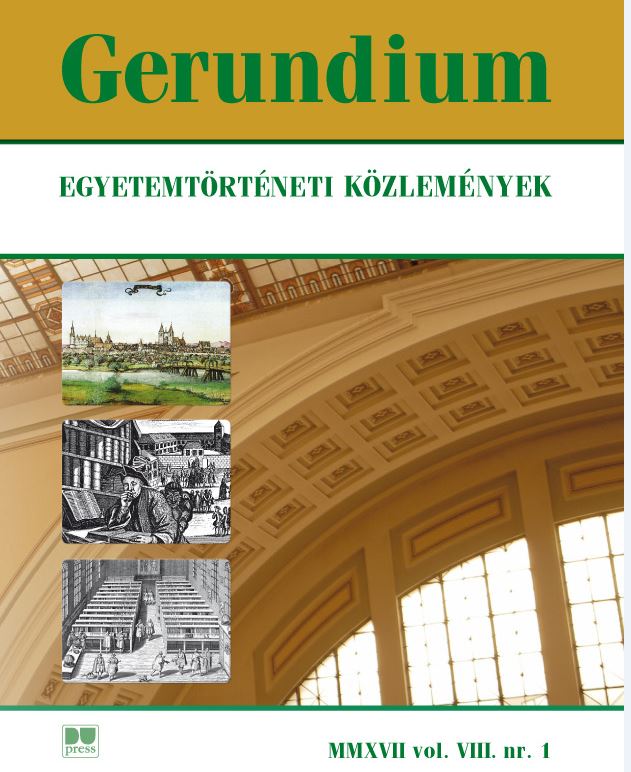Coetus Ungaricus – A wittenbergi magyar diáktársaság (1555–1613)
Szerző
Megtekintés
Hogyan hivatkozzuk
Absztrakt
Coetus Ungaricus. Hungarian student body in Wittenberg (1555–1613). At the University of – Wittenberg, in 1555, the Hungarian students – with Philipp Melanchthon’s support – founded a student society (in Latin: a coetus) which existed until 1613. Its important documents are the university records, now kept in Halle, and the society’s register-book can be found in Debrecen. The most important documents of the university archive (to be found also in Halle nowadays), due to the stormy historical events only a fragmental one, can be reached today in a printed form. The Hungarian scholars started to deal with the history of the coetus in the first half of the 20th century, but those publications are not accurate enough according to the modern norms. The majority of the students arrived from the rural layers of Hungarian society, from villages or small towns, and this fact can be witnessed in their family names. An element of which was generally the very name of their native settlement. (See: Gáspár Károlyi, who was born in Nagykároly, etc.) In certain periods some young men from the smaller nobility, or even aristocracy appeared in this community. Most of the Hungarians studied in Wittenberg only for one-two years, and couldn’t reach an M.A, degree, but some of them spent a long time abroad, in several countries. After their arrival the served as professors, and later ministers of the Hungarian protestant churches, some of them became superintendents, bishops of our Reformed Church.







